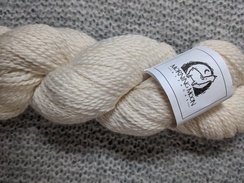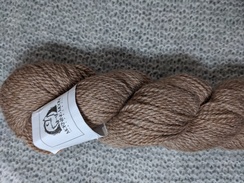Heat Stress in Alpacas
Help Your Alpacas Survive
First, none of the heat load equations I have seen thrown about on the site take into account the wind or the dew point. These are MAJOR issues and without considering them the "equations" are quite meaningless.
Secondly, the "equations" do not take into account your local conditions in the barn, the physiological state of the alpaca, the amount of shade, mud or other water sources.
But first some of the physics (and it will not be hard).
Heat and cold moves in response to three situations: convention, conduction and radiation.
Convective heat is the heat in an oven (yes, like convection oven!). The animal gets hot as the air is hotter than the alpaca is. The hotter the air is above the animals body neutral temperature point (more on this later) the faster the alpaca will heat up.
Conduction occurs when the alpaca kushes on a hot asphalt road. The heat is directly transferred to the animal and conducted heat causes a faster temperature rise than convected heat. In reality, alpacas do not kush on a hot road, but they do kush on hot sand or lie on hot ground.
Radiation is that heat that you notice when going from the shade into the sun. The air temperature is the same - but it FEELS hotter. And it is as the sun is beating down adding a lot to your heat load. You can be cool in the shade and be susceptible to heat stroke simply by going "into" the sun.
Alpacas have all three heat loads on them and you can use some of the qualities of each type of heat to cool them. First, recall that there is very little hair on the belly. This is called the thermal window as they can sweat here and have cool air circulate here (convection). Or they can Kush on a cool concrete paved floor (convection) getting the bare belly on the cool pavers. Or they can get out of the sun and into the shade (minimize radiation).
Even better is to mist the animals on the belly, and allow them to lie on shaded water cooled pavers with a breeze blowing across them.
But any breeze will not cool unless the water can evaporate. Here are some of the physics on that.
The best number to look at on the weather report is the dew point. This is the temperature where water will not evaporate. For example a very muggy day may have a dew point in the mid 70's. When the dew point is the same as the ambient temperature then you have fog. This is also the temperature at night when dew will form.
In order to get any evaporative cooling, the air temperature must be at least 20 degrees higher than the dew point. With a dew point in the mid 70's, this means that you need an air temperature in the mid 90's in order to cool. But that temperature is hot and by itself will cause overheating! This is why a high dew point creates a dangerous day – the alpacas simply cannot cool themselves.
Can a breeze help in this situation? Note that a breeze only brings in fresh air to replace the "film" of stagnant air around your body. If there is no evaporation, then a breeze is of no help at all. Just a sultry muggy breeze.
This is why you can run in the morning when the temperature is "only in the mid 70's, but come back soaking wet, flushed and hot as hell. The reason is that you are likely running in the sunshine (radiation again) and the dew point is close to the ambient temperature.
This exercise example is very important. Never, never do breeding when it is hot still and humid. You can put your male into heat stroke VERY easily. But you say it is just in the mid 70's? The test is how much sweat YOU would work up going for a short jog (or some other exercise) in that type of heat.
This brings into account the neutral temperature. This is the temperature when the non-pregnant adult alpaca is neither gaining nor loosing heat while standing in the shade. This temperature can be in the 40's or perhaps as high as 100 all depending on the humidity, breeze and physiological state of the alpaca.
First physiology. I hardly need to tell you ladies who have had children what it is like being pregnant in the summer. Just the thought brings up a sweat (and bad words!). A pregnant dam who has a rapidly growing fetus generates a LOT of heat. Her neutral point is very different (much higher) than her non-pregnant yearlings. Also rapidly growing crias generate a lot of heat. And because their 25 lb body mass is not big, these crias heat up faster than a 175 lb adult male.
The net result of this is you need to consider the alpaca who is MOST susceptible to the heat load - and this is likely your pregnant female. The ones who are in trouble now are those who will deliver this fall.
Now what to do. First, we provide cool neck towels, air conditioned pavers, human slaves with fans (think of reclining Cleopatra) and a mountain view!
More seriously consider the following. First listen to the weather report. Know your weather. Yes, we used to listen to Letterman (or Carson for some of us), but now we catch the 6 AM "Ag Report". This will tell you of dangerous heat conditions.
Secondly, prepare your farm. This can be simple like shade and sprinklers. You may have a dry heat that allows you to use an evaporative cooler, or you can use fans. But have something.
Thirdly, watch your animals. The first aspect of a heat load is an increased respiratory rate. Then it becomes panting and the nose flares with each inhalation. This is DANGER, DANGER, and DANGER! You need to hose off the alpacas with cool water NOW. These conditions are causing body temperature to rise faster than the alpaca can get rid of heat.
I expect that all males are shorn. The effects of heatstroke in a male can cause temporary infertility and with serious heat stroke there is permanent (yup, he is sterile) loss of sperm generation. When it cools off he will still have libido, but no live sperm. This is because there are two types of cells in the testes. One cell type makes testosterone and is resistant to heat. The other makes sperm and IS heat sensitive.
Watch out for cheap fans. The motors need to be dust sealed. If you use a fan in the barn, it will get dusty. And the dust will burn – odd as it may seem.
Be careful not to lock up your alpacas in a barn with evaporative coolers. These coolers work by putting moisture into the air. If it does not evaporate, then you are creating an even worse situation (high dew point). Camelids are also susceptible to pulmonary infections caused by high humidity. Think of the situation. If it is dark, moist and damp then you have ideal conditions for mold. Alpacas suffer from the same disease that horses get from mold - heaves.
Today in Oklahoma it is not hot - in fact it is quite cloudy. But it is muggy with little breeze. I have a set of sprinklers going and the pregnant piggies are wallowing in the mud. No problem as mud washes out and these moms to be are enjoying the mud bath.
However, later this summer we can (and will) have days where it is in the high 90's or low 100's with bright sunshine and the alpacas are fine out grazing in the pasture (or even lying about getting a sun bath!). How can this be? On those days the dew point is often in the mid 50's and we have that famous Oaklahoma breeze. They will get good evaporative cooling as the ambient temperature is far more than 20 degrees above the dew point. They will be out there grazing and not even thinking of going into the shade despite the sun beating down. The combination of the evaporative cooling and the wind keeps them near their thermal neutral zone.
This brings up water. In order to sweat, the alpacas must be able to drink - and yes, alpacas do sweat!. On hot, but dry days, they can go through a couple of gallons of water per day for each animal! So keep those water buckets full. I only add electrolytes when it is very hot (Gatorade! - they like lemon lime) but much more diluted than what you and I drink. I add about 1/4 cup of dry powder Gatorade to a 5 gallon bucket. I grew up in New England and recall how hot is was. It was not that hot but it sure was muggy. In fact, I am cooler here in "hot" Oklahoma than I was long ago! The area of southern New Hampshire and Vermont can have some of the highest heat loads in the country. So just because you live "up north" is not protection.
Lastly, never move animals from a cool area to a hot area in the summer - especially if pregnant. You will likely loose the pregnancy. Wait for the fall or winter to move these animals. Or leave them where they are to birth out.
In summary, the best "test" for heat load is for you to put on a long sleeve shirt, long pants and jog for a few hundred yards. If you are dying of the heat then your alpacas are too. No need for fancy equations or the three types of heat . . .
Many thanks to the writer of this article
April 21, 2011


